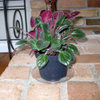thanks to Jon - seed pods on Aeschy....
komi
19 years ago
More Discussions
Thanks to Jon for mentioning in passing somewhere how flowers go through 2 phases (pollen first, stigma later). I now have a few pods on my Aeschy. longicaulis.... Hopefully I'll keep it happy while they develop... and then the AGGS will get a donation.
Here is a link that might be useful: {{gwi:838246}}

jon_d
komiOriginal Author
Related Professionals
Beachwood Landscape Architects & Landscape Designers · Lyons Landscape Architects & Landscape Designers · Middle Island Landscape Architects & Landscape Designers · White Oak Landscape Architects & Landscape Designers · Canton Landscape Contractors · Estelle Landscape Contractors · Lancaster Landscape Contractors · Oviedo Landscape Contractors · Roswell Landscape Contractors · San Antonio Landscape Contractors · San Benito Landscape Contractors · Suitland Landscape Contractors · Point Loma San Diego Siding & Exteriors · South Glastonbury Siding & Exteriors · Waterford Siding & Exteriorsjon_d
komiOriginal Author
komiOriginal Author
stonesriver
jon_d
komiOriginal Author